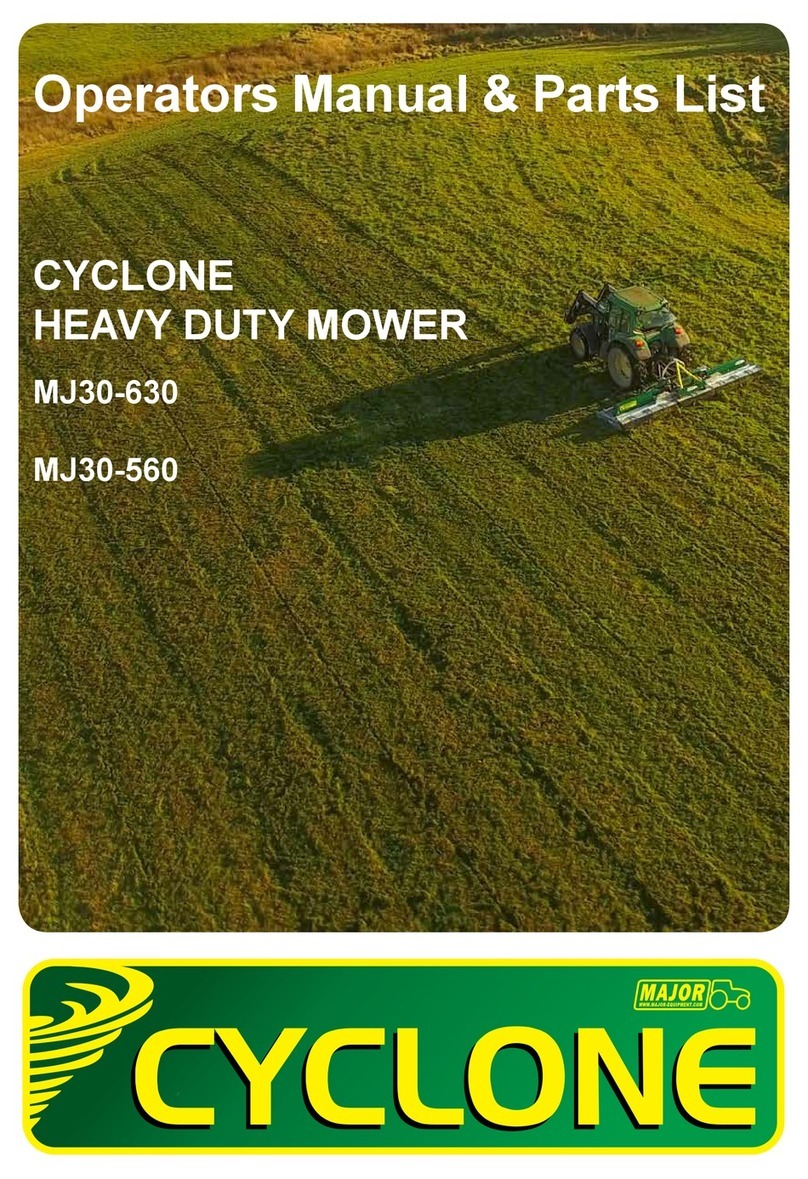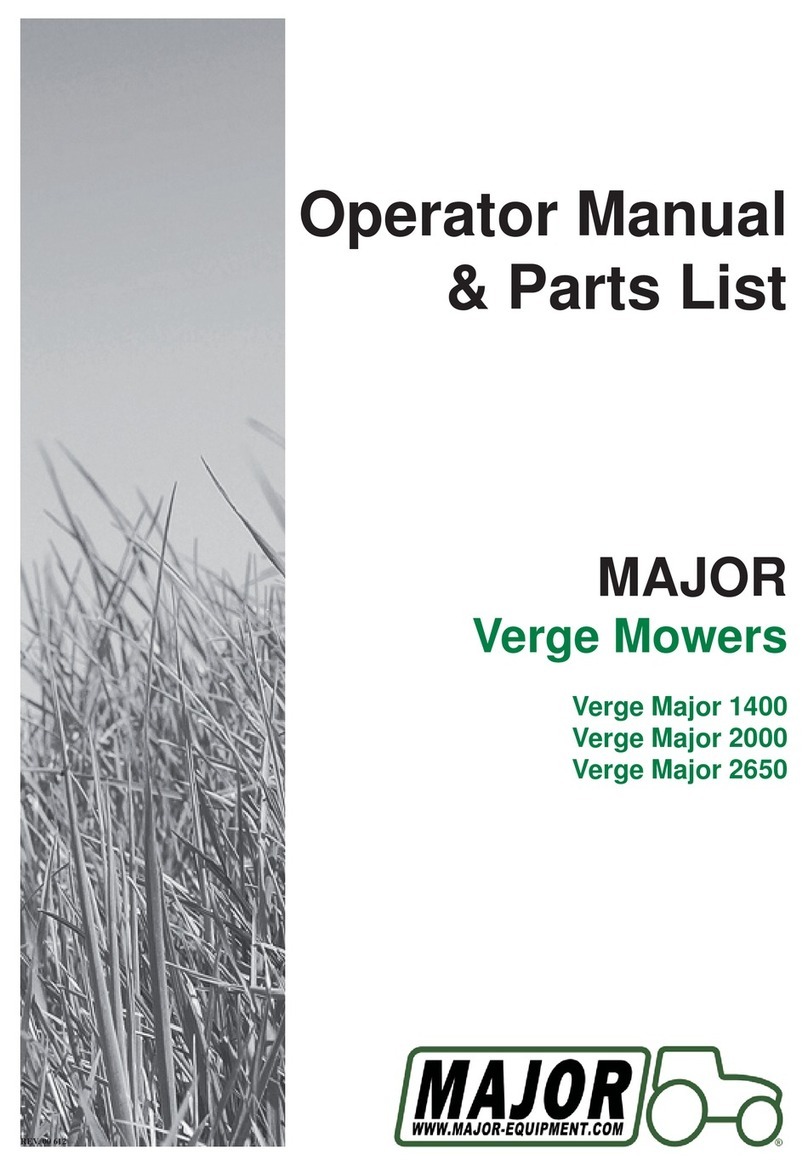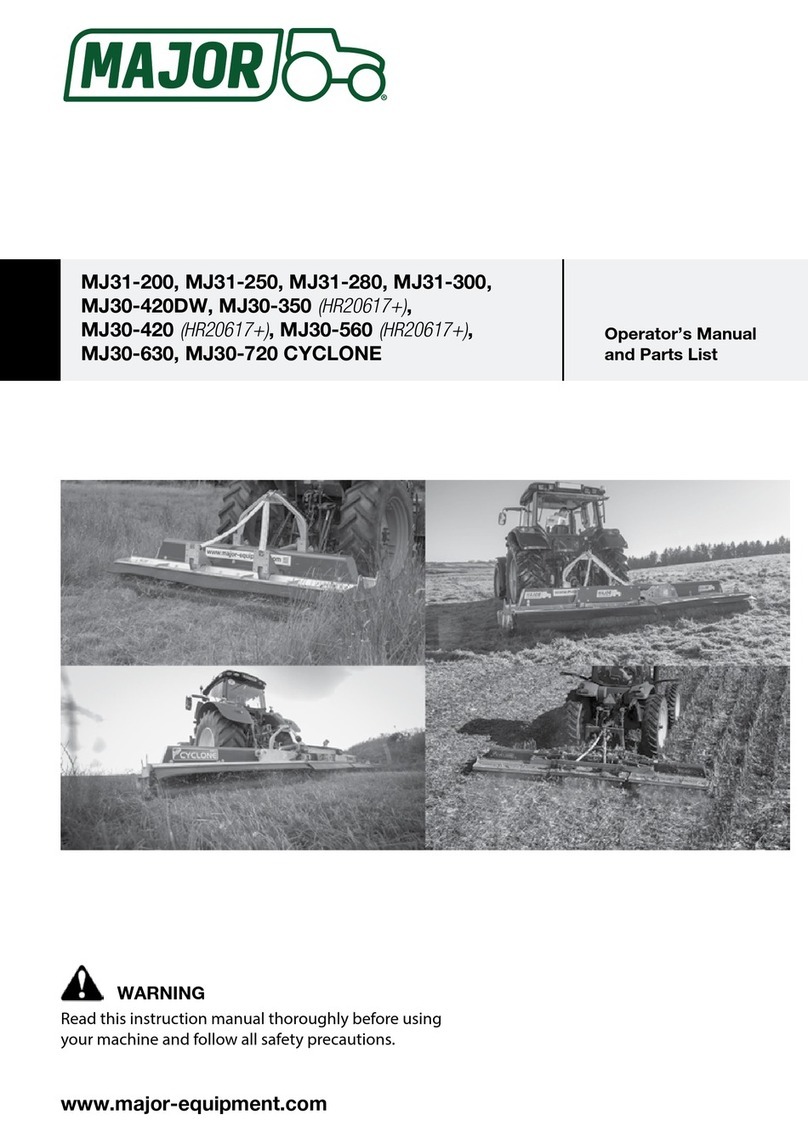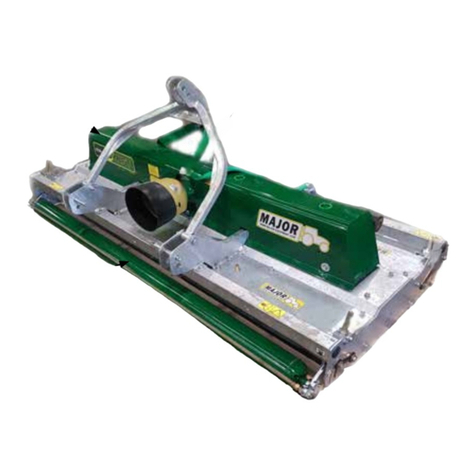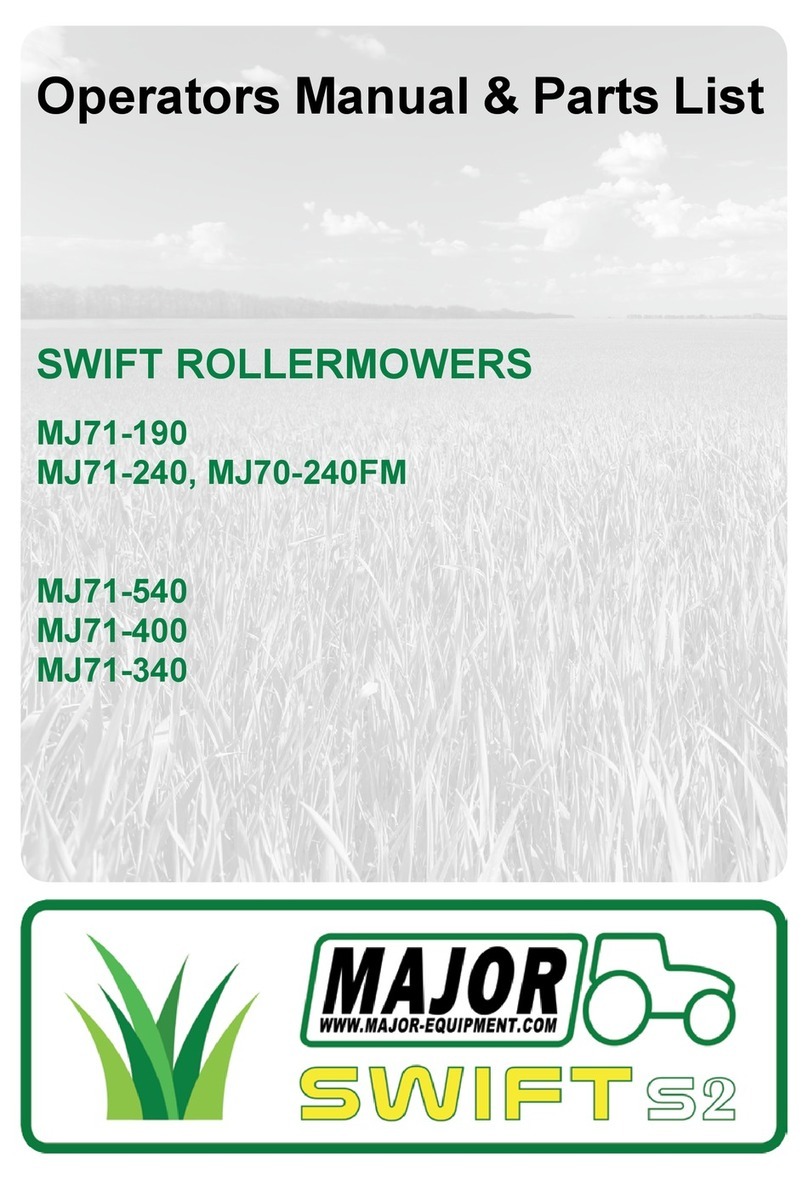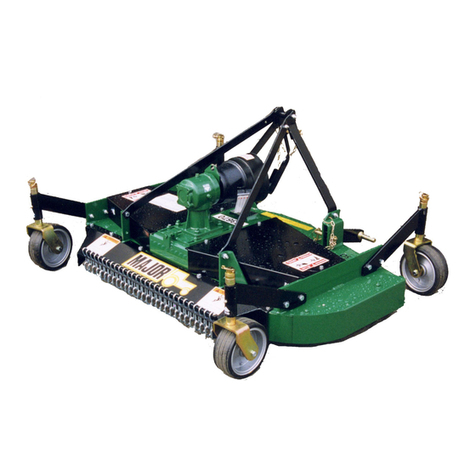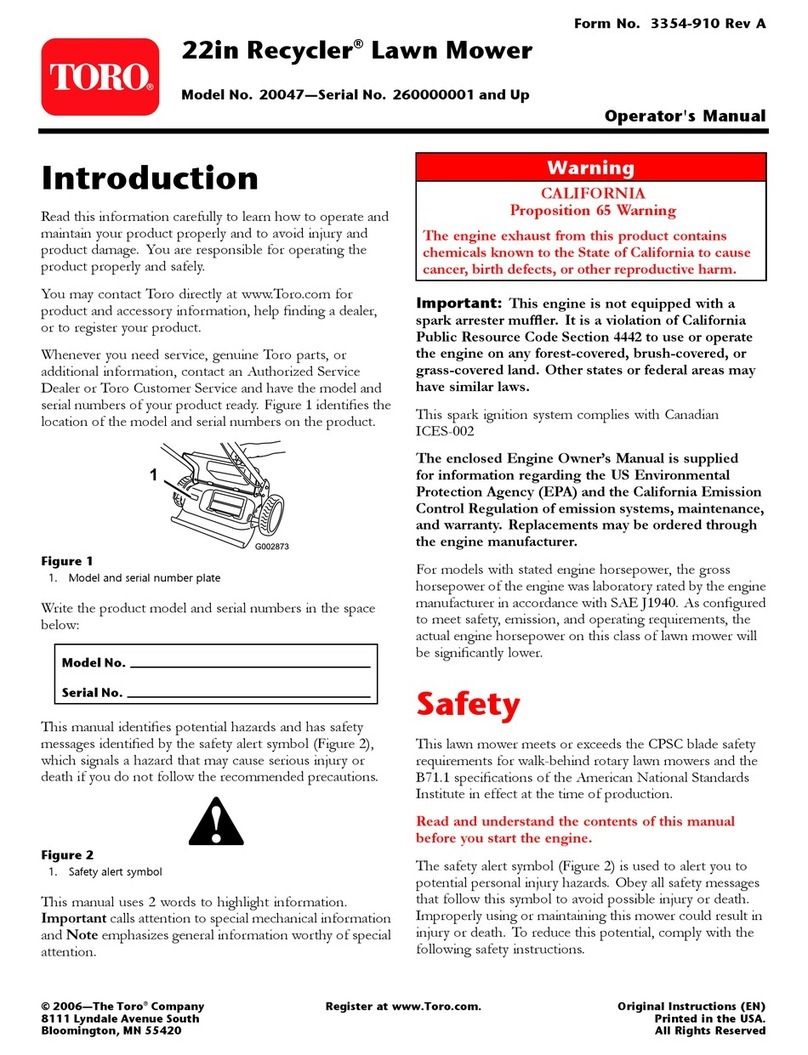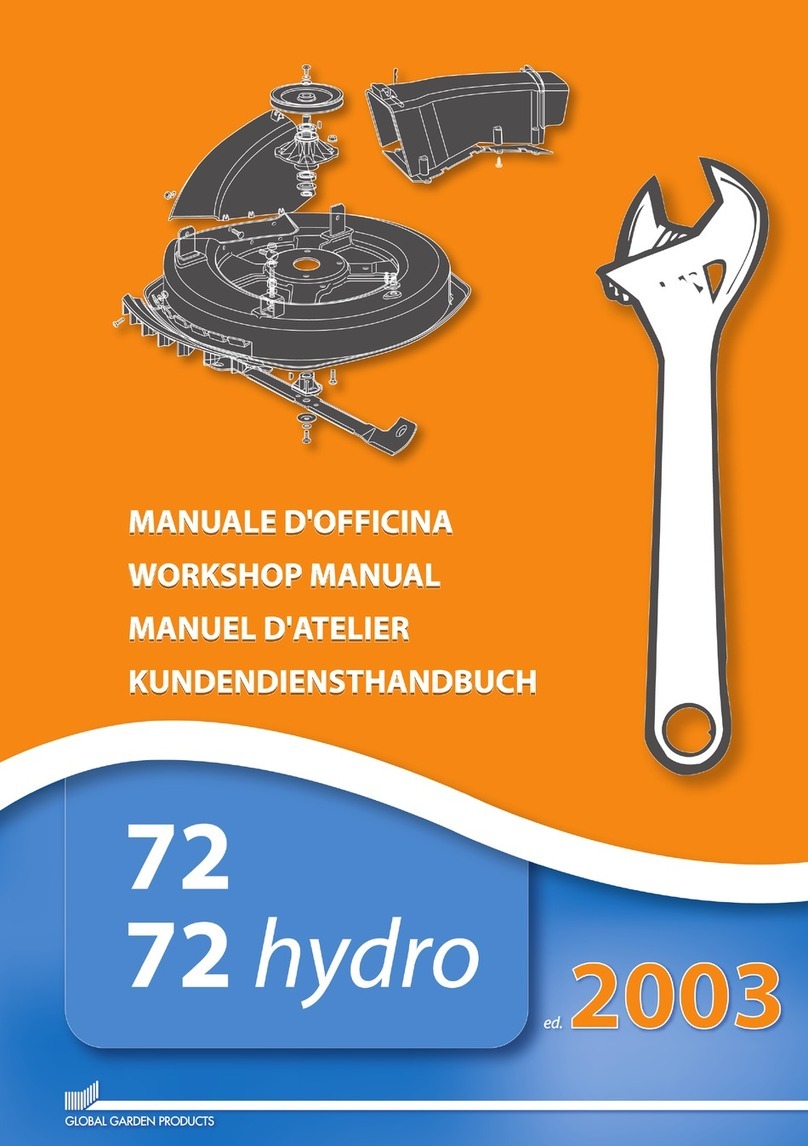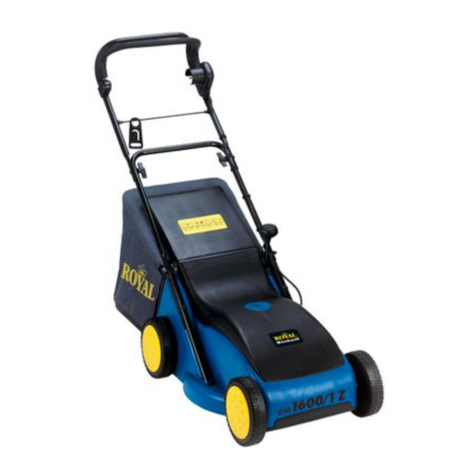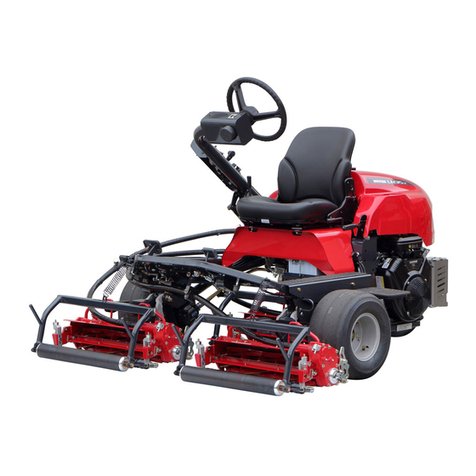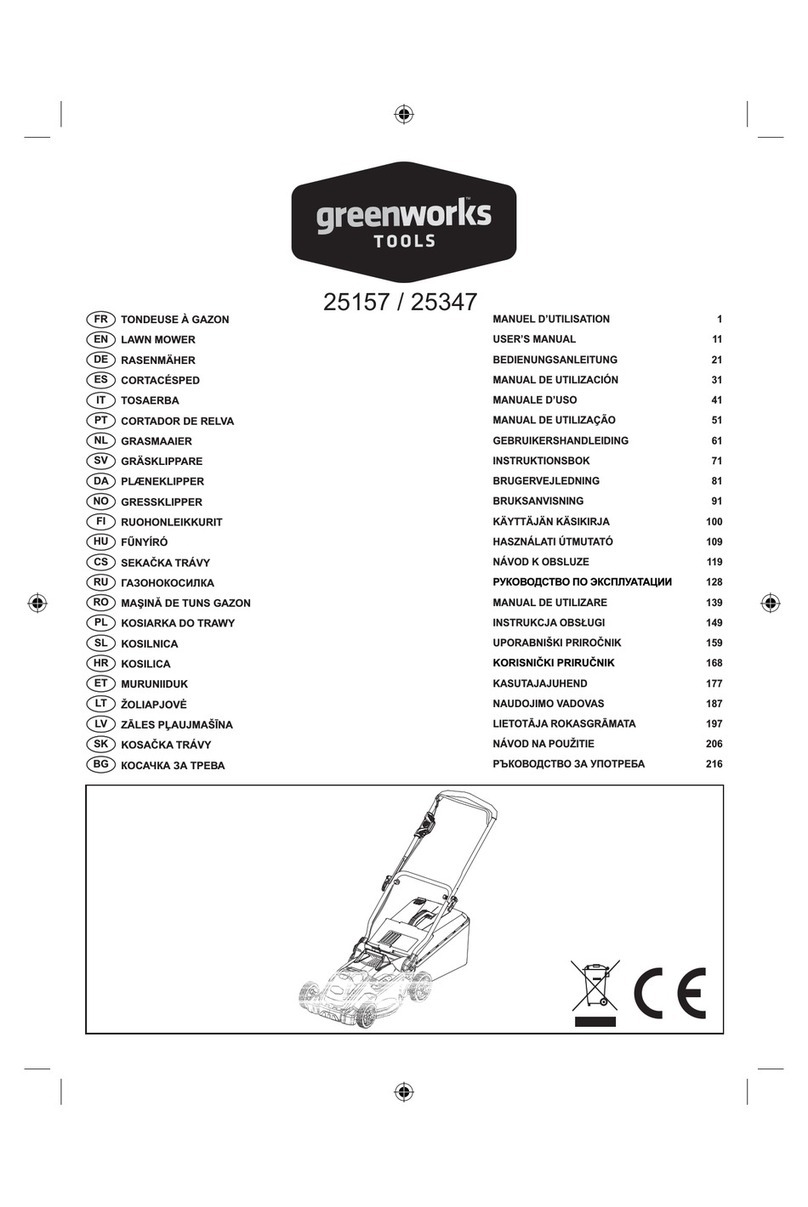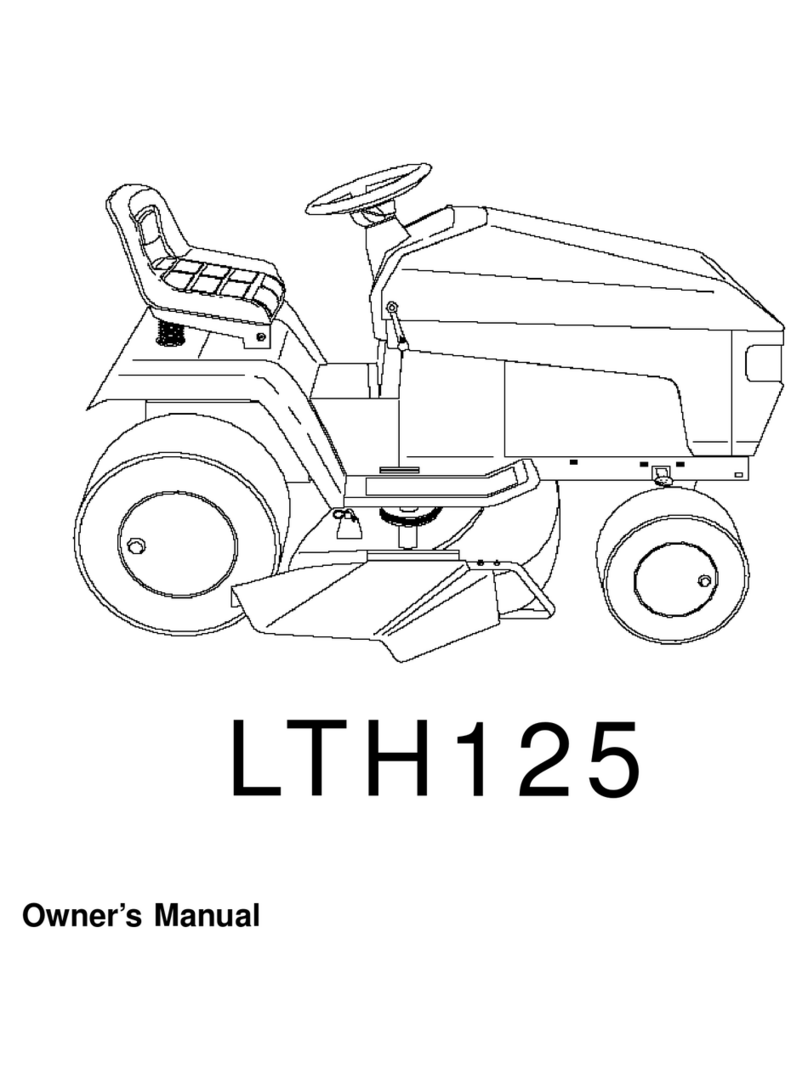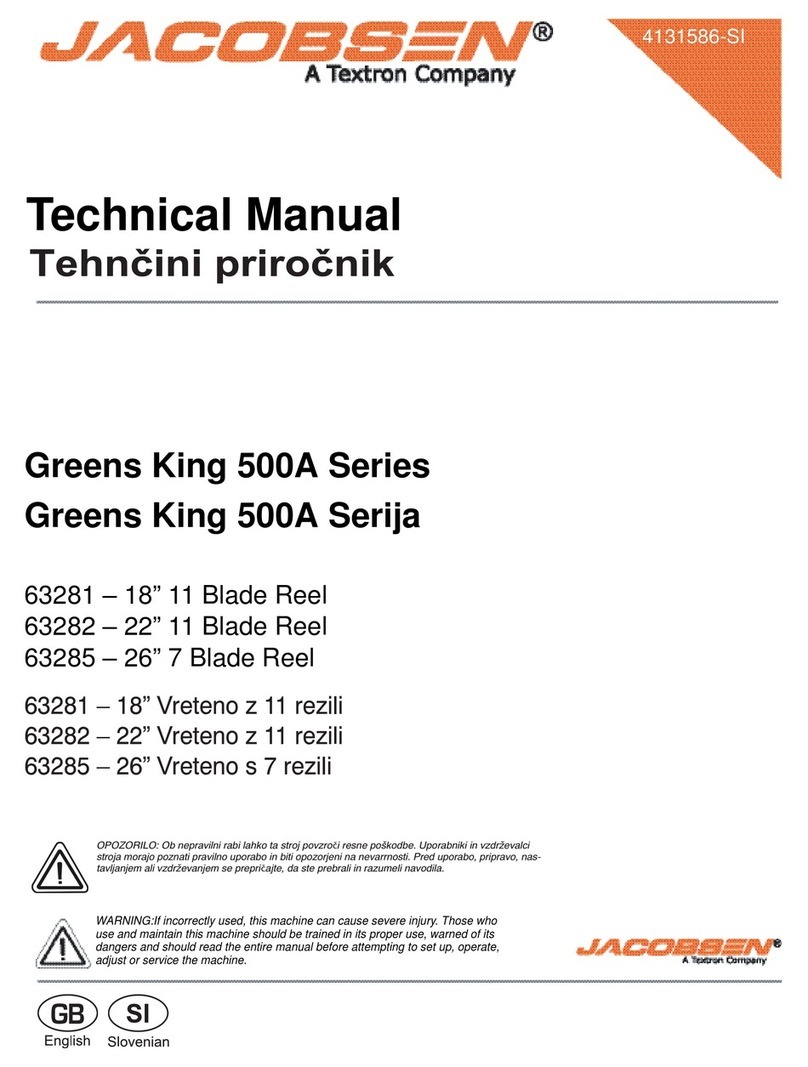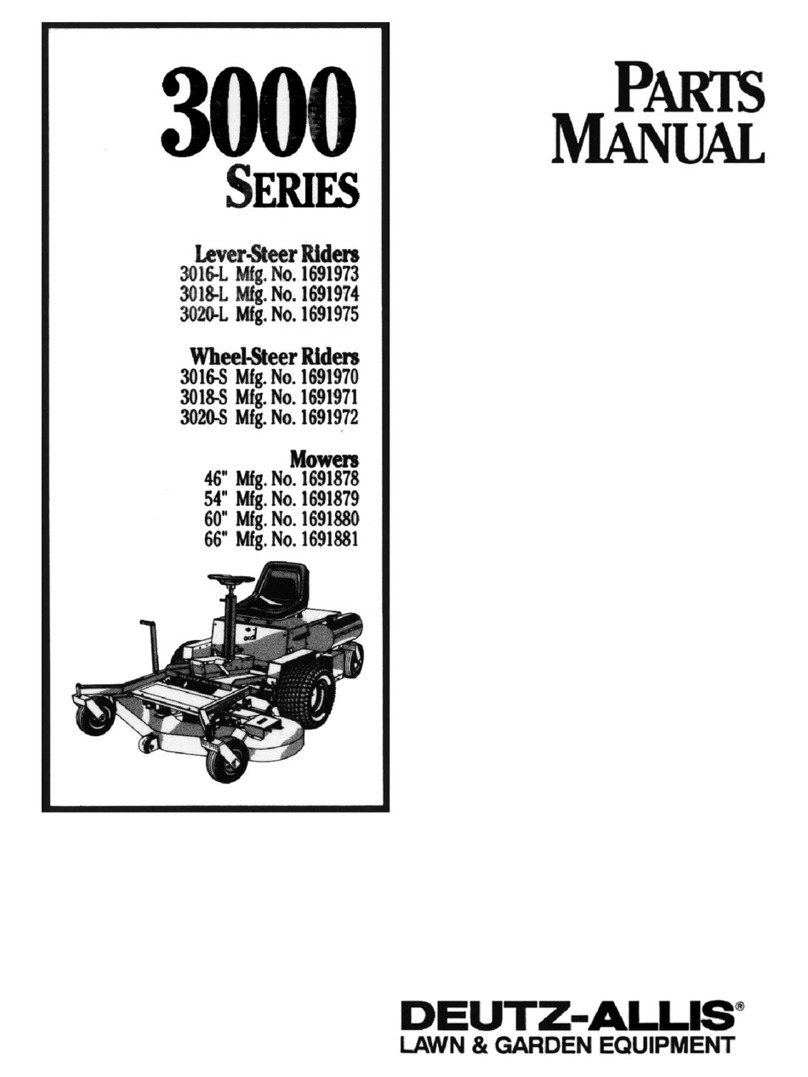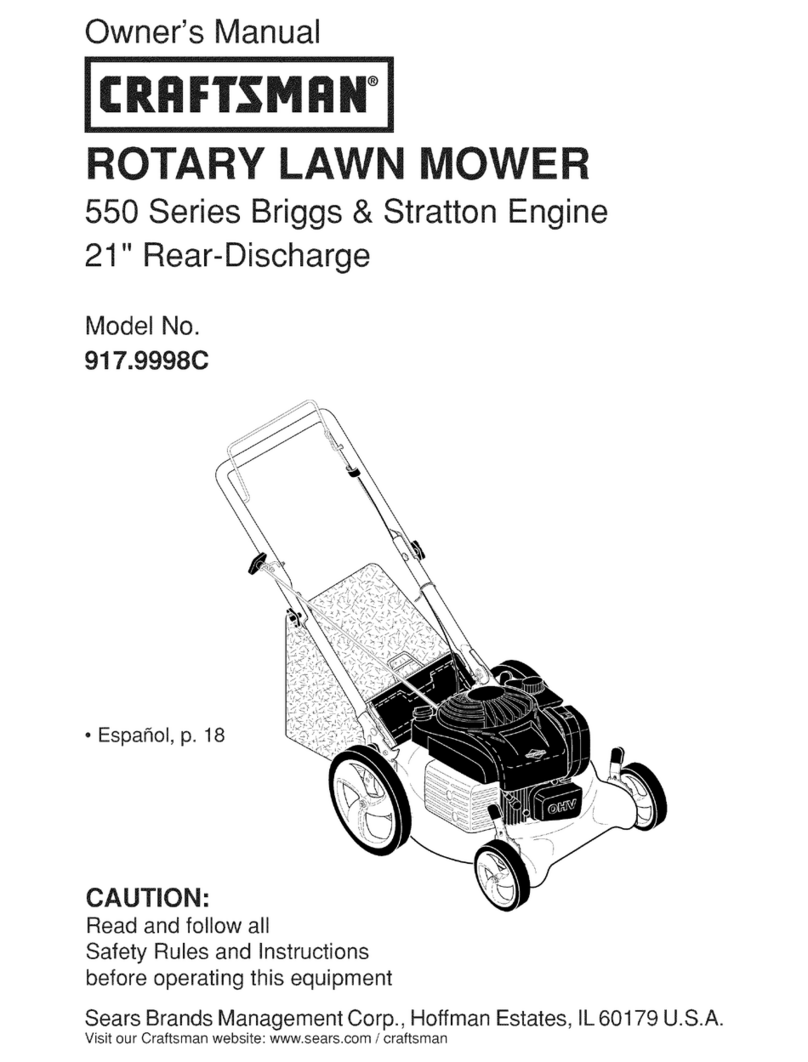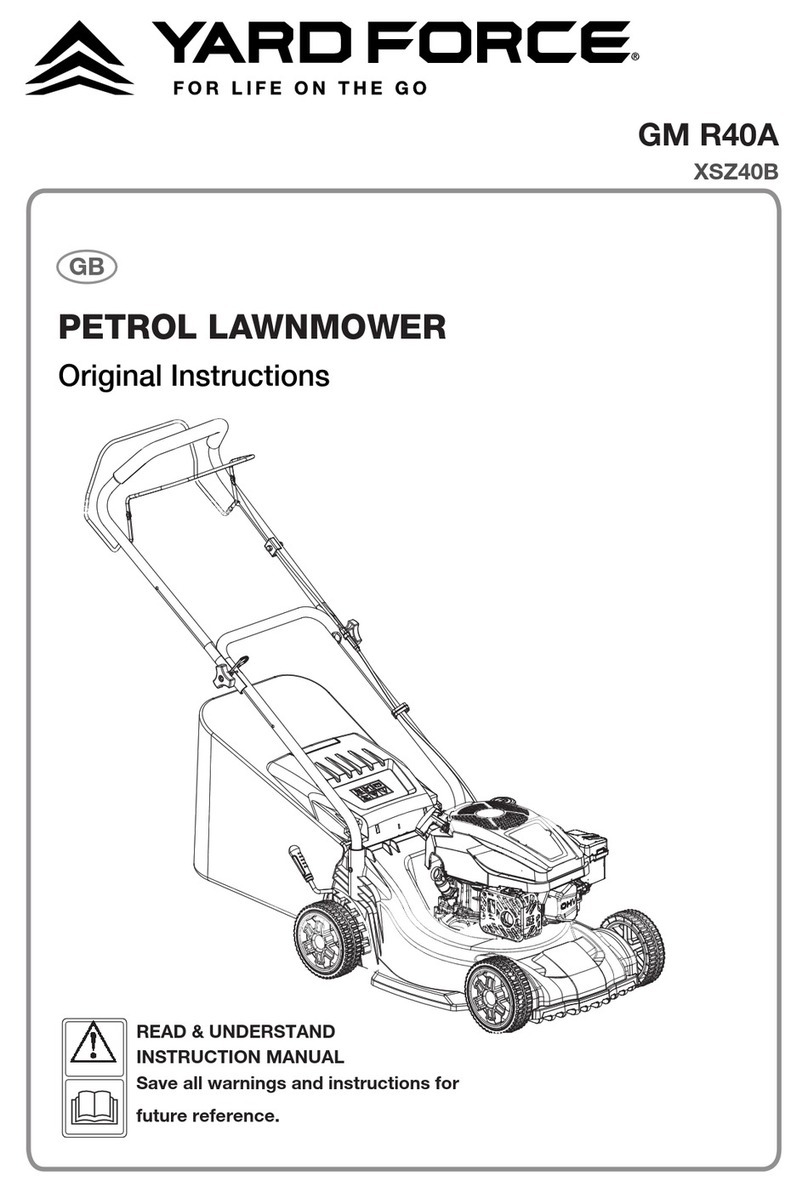
www.major-equipment.com
4
Hazards associated with operating Grass Cutting Machinery
Shear Hazard
Shear hazards are created when the edges of two objects move toward or next to each other closely enough to cut
relatively soft material. This can include the parts of the machine under hydraulic control when operating from transport
to mowing position. Note, the wing units are designed to oat independently of the centre deck & are free to move within
operating limits.
Crush Hazard
Bystanders can be injured when machine is lowered into mowing position. Winged machines have crush points around
the hinge areas & between the wing & main body. Always use transport locking bars when not in use (winged models
only).
Rotating Blade Hazard
All persons are at risk if they place their hands or feet under the machine when it is raised from the ground when the
blades are in motion.
Pinch Hazard
Pinch points are created when two objects move together, with at least one of them moving in a circle. This hazard is
common in power transmission devices such as Belt Drives, Gear Drives & Rollers. Ensure all guarding is present.
Wrap Hazard
Any exposed, rotating machine component is a potential wrap point. Injuries usually occur when loose clothing or long
hair catch on and wrap around rotating parts such as PTO shafts or Drive shafts on the machine. Ensure all guarding
is present.
Free-wheeling parts Hazard
The heavier a revolving part is, the longer it will continue to rotate after power is shut off. This characteristic is called
‘free-wheeling.’ Blades, and various other components, drive shafts etc., will continue to move after power is shut off -
often for several minutes. Injuries occur when:
• Operators shut off equipment, and attempt to clean or adjust a machine before components have completely stopped
moving.
• Shear bolt protection device in PTO shaft shears & the mowing parts are still spinning but the primary PTO shaft is
stationary. Operator awareness is the key to safety around freewheeling parts. Never raise the machine while the
blades are still rotating.
Thrown objects Hazard
Machines throw material as a natural part of doing their job. Foreign objects, such as stones, sticks and other debris,
may be taken into this equipment and expelled at tremendous speed. These objects are contained by the sides of the
machine and by the rear/front rollers / guards / chain guards / rubber skirts depending on model of your machine.
Ensure bystanders are clear from the machine & cannot be hit with debris expelled from the machine. Bystanders or
animals in the path of thrown objects could be seriously injured. Never operate machine with decks raised from the
ground as this makes the front/rear protection redundant.
Hydraulic Hazard (if applicable)
Hydraulic systems store considerable energy. Careless servicing, adjustment, or replacement of parts can result in
serious injury. High pressure blasts of hydraulic oil can injure eyes or other body parts. The following precautions are
crucial:
• Make certain the hydraulic pump is turned off.
• Lower attached equipment to the ground.
• Conrm that load pressure is off the system.
A pinhole leak in an hydraulic hose is a serious hazard. A leak may not be visible, and the only sign may be a few drops
of uid. Never inspect hydraulic hoses with your hands, because a ne jet of hydraulic uid can pierce the skin.
Slips, Trips and Falls Hazard
Slips and falls often result from:
1. Slippery footing on the ground
2. Cluttered steps and work platforms.
The potential for slips and falls can be greatly reduced by using good judgement and practicing good housekeeping on
and around equipment.
